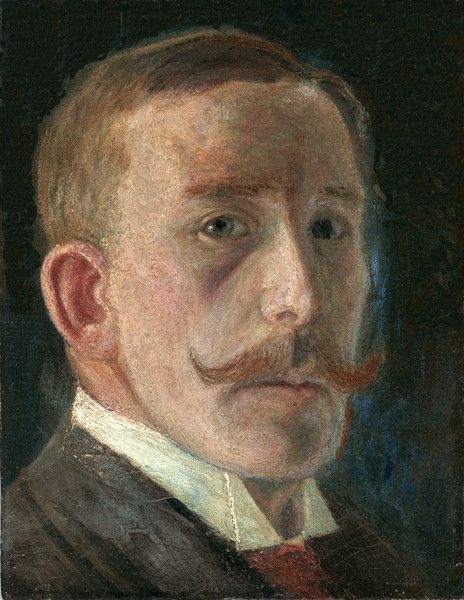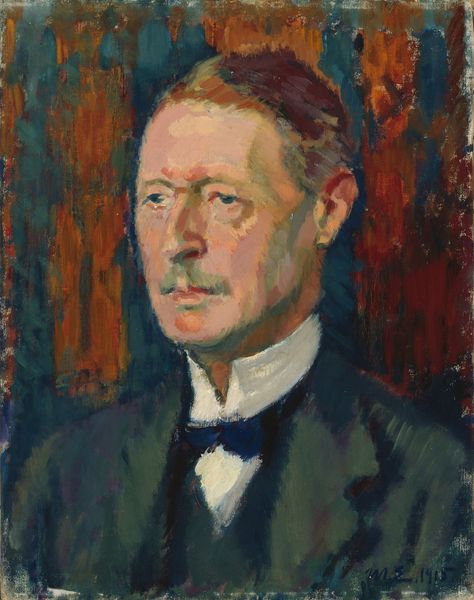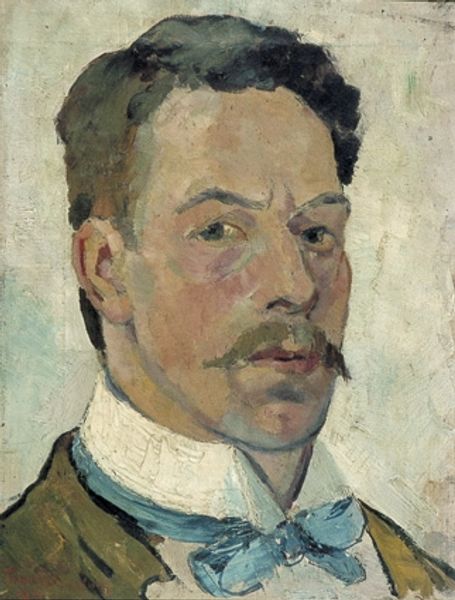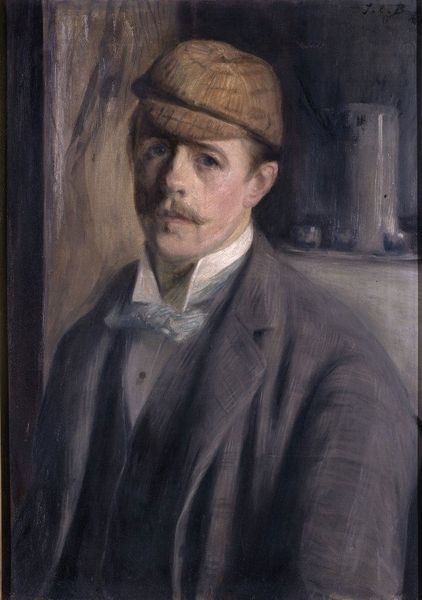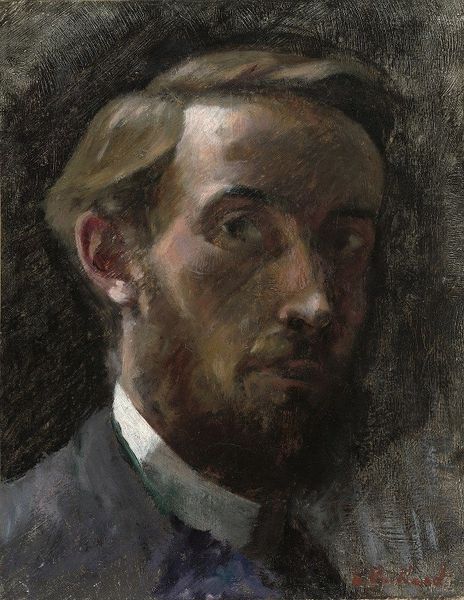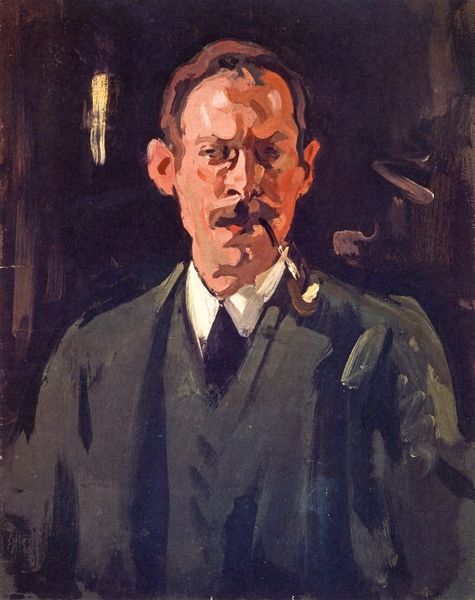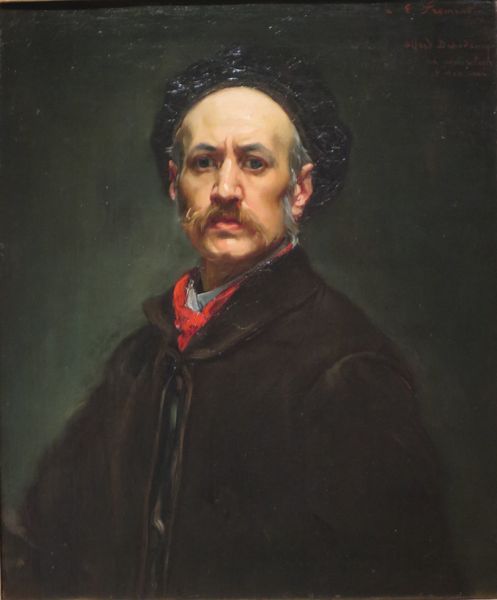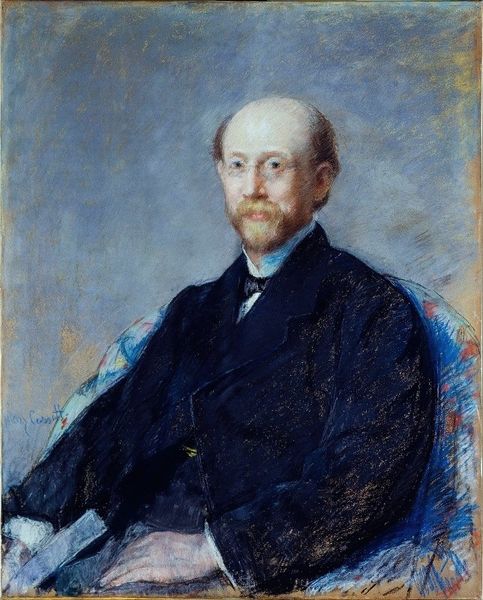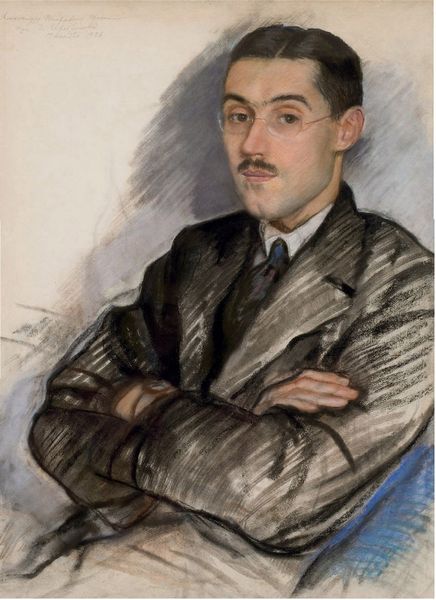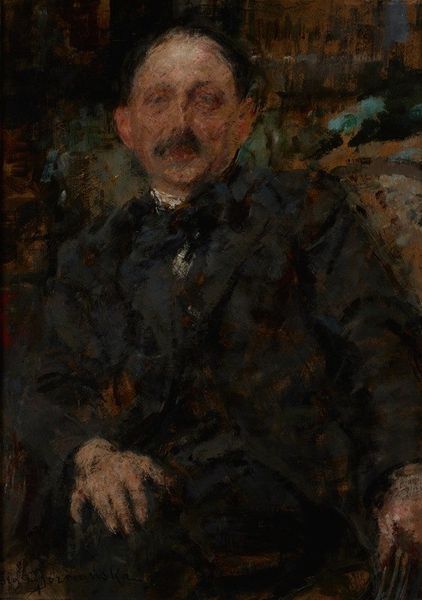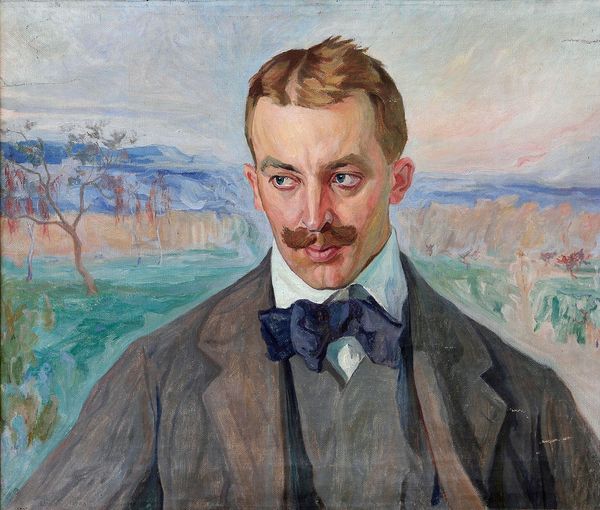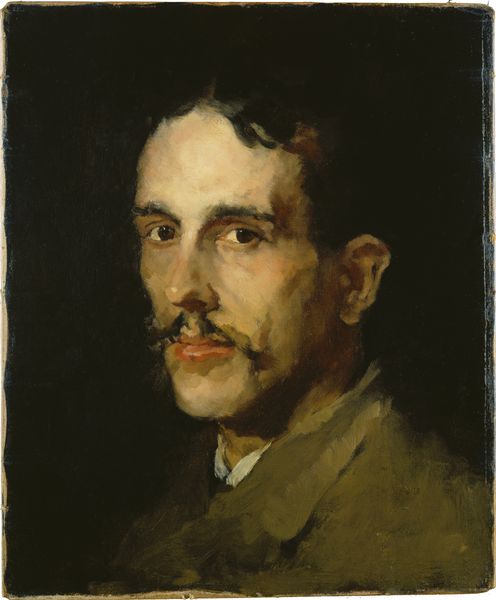
Portrait of the Artist’s Elder Brother - Christopher Nisbet Pringle c. 1890
0:00
0:00
Dimensions: support: 457 x 305 mm
Copyright: CC-BY-NC-ND 4.0 DEED, Photo: Tate
Curator: John Quinton Pringle's "Portrait of the Artist’s Elder Brother - Christopher Nisbet Pringle" offers a glimpse into the artist's personal life. I find it quite striking. Editor: Immediately, I'm drawn to the portrait's almost unsettling intimacy. The elder brother's gaze feels both direct and somehow detached, reflective of the complex socio-economic pressures of the time. Curator: Pringle, painting in the late 19th and early 20th centuries, often depicted working-class life in Glasgow. This portrait, though, feels different. It has an air of bourgeois respectability, a deliberate presentation. Editor: Absolutely. Look at the formal attire. The plaid vest, the dark jacket. This isn't just a depiction of familial affection, it's an assertion of social standing during a period of intense class stratification. How do we interpret that now? Curator: It's a reminder that even within families, social and economic considerations played a crucial role. Pringle's artistic journey itself was shaped by these forces, his struggle to gain recognition in a hierarchical art world. Editor: The work speaks to the intertwined nature of identity, class, and artistic representation. It challenges us to consider how these portraits reinforce or disrupt social norms. Curator: Indeed, considering the complexities of representation, I'm now wondering about the dynamic between the two brothers themselves. Editor: Yes, and how that dynamic is framed and presented for public consumption. Always more to consider.
